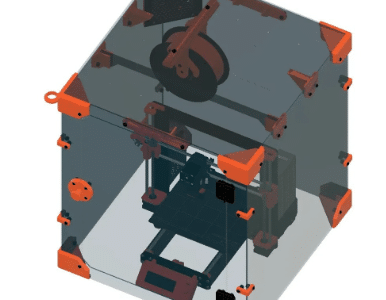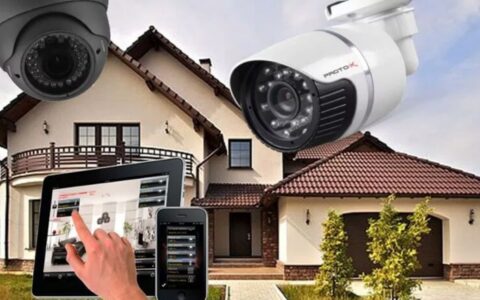
In an age where security concerns are paramount, outdoor security cameras have become indispensable tools for safeguarding our homes, businesses, and properties. These devices offer a vigilant eye, providing surveillance and peace of mind against potential threats such as intruders, burglars, and trespassers. However, choosing the right outdoor security camera involves considerations ranging from weather resistance to image quality and beyond. This comprehensive guide will delve into the essentials of outdoor security cameras, helping you make informed decisions to protect what matters most.
Understanding Outdoor Security Cameras
Outdoor security cameras are specialized surveillance devices designed to withstand the elements while capturing high-quality footage of outdoor areas. They serve as a deterrent to criminal activity and provide valuable evidence in the event of an incident. These cameras come in various types and offer a plethora of features tailored to meet specific security needs.
Types of Outdoor Security Cameras
Wired Cameras: Connected directly to a power source and a recording device, wired cameras offer stable connections and uninterrupted power. They are suitable for areas with consistent power access but may require professional installation.
Wireless Cameras: These cameras connect to Wi-Fi networks, allowing for flexible placement and easy installation. They are powered by batteries or solar panels, making them ideal for locations without convenient power sources. However, wireless cameras may suffer from signal interference and require periodic battery replacement.
PTZ Cameras (Pan-Tilt-Zoom): Offering remote control over pan, tilt, and zoom functions, PTZ cameras provide enhanced flexibility in monitoring large outdoor areas. They can be programmed to track motion automatically or controlled manually for optimal surveillance.
Fixed Cameras: Fixed cameras have a stationary lens and offer a static field of view. While they lack the flexibility of PTZ cameras, they are often more affordable and suitable for monitoring specific areas such as entry points or driveways.
Key Features to Consider
Weather Resistance: Outdoor security cameras must withstand various weather conditions, including rain, snow, and extreme temperatures. Look for cameras with an IP (Ingress Protection) rating indicating resistance to dust and water ingress.
Night Vision: To maintain surveillance around the clock, choose cameras equipped with infrared (IR) LEDs for night vision capabilities. This ensures clear footage even in low-light or nighttime conditions.
Resolution: Higher resolution cameras capture sharper and more detailed images, allowing for better identification of individuals and objects. Consider cameras with at least 1080p resolution for optimal clarity.
Motion Detection: Motion-activated cameras trigger recordings when motion is detected, minimizing storage space and alerting users to potential threats. Adjustable sensitivity settings prevent false alarms caused by pets or moving foliage.
Two-Way Audio: Some outdoor cameras feature built-in microphones and speakers, enabling two-way communication between users and individuals on-site. This facilitates remote interaction and deterrence of suspicious activity.
Cloud Storage vs. Local Storage: Choose between cloud-based storage services and onboard memory cards for storing recorded footage. Cloud storage offers remote access and backup but may incur subscription fees, while local storage provides autonomy and eliminates recurring costs.
Installation and Placement Tips
Proper installation and strategic placement are crucial for maximizing the effectiveness of outdoor security cameras. Consider the following tips to ensure optimal coverage and performance:
Height and Angle: Mount cameras at a height that provides a clear view of the target area while minimizing vulnerability to tampering. Adjust the angle to eliminate blind spots and capture critical details such as faces and license plates.
Cover Vulnerable Entry Points: Install cameras near entryways, windows, and other vulnerable areas to deter intruders and capture suspicious activity. Ensure sufficient overlap between camera fields of view for comprehensive coverage.
Consider Lighting Conditions: Position cameras away from direct sources of light to avoid glare and lens flare. Optimal placement takes into account natural and artificial lighting conditions to ensure balanced exposure and clear footage.
Secure Mounting: Use sturdy mounts and hardware to secure cameras in place and prevent tampering or vandalism. Consider anti-tamper features such as locking enclosures or hidden wiring for added security.
Wire Management: Conceal wires and cables to deter tampering and maintain a neat appearance. Utilize cable conduits, wall channels, or wireless configurations for streamlined installation and enhanced aesthetics.
Regular Maintenance: Perform routine checks and maintenance to ensure cameras remain operational and free from obstruction. Clean lenses, adjust settings, and replace batteries or memory cards as needed to maintain peak performance.
Integration with Smart Home Systems
Outdoor security cameras can be integrated into smart home systems for seamless control and automation. By connecting cameras to compatible platforms and devices, users gain enhanced functionality and convenience:
Mobile Apps: Most outdoor cameras come with companion mobile apps that enable remote monitoring, playback, and configuration from smartphones or tablets. Receive real-time alerts and notifications for immediate awareness of security events.
Voice Control: Integration with voice assistants such as Amazon Alexa or Google Assistant allows for hands-free control of cameras and access to live feeds using voice commands.
Home Automation: Integrate cameras with smart home hubs or systems to automate actions based on detected events. For example, trigger lights or alarms in response to motion detection or schedule recordings based on predefined criteria.
Third-Party Compatibility: Choose cameras that support interoperability with popular smart home platforms and devices for enhanced flexibility and compatibility. This ensures seamless integration into existing smart home ecosystems.
Privacy and Security Considerations
While outdoor security cameras offer valuable protection, they also raise concerns regarding privacy and data security. To mitigate risks and safeguard personal information, follow these best practices:
Secure Network Connectivity: Ensure cameras connect to secure Wi-Fi networks with strong encryption and unique passwords to prevent unauthorized access. Regularly update firmware and software to patch vulnerabilities and enhance security.
Privacy Zones: Configure privacy zones within camera settings to exclude sensitive areas from recording or monitoring. This prevents inadvertent capture of private spaces and respects the privacy of neighbors or passersby.
Data Encryption: Choose cameras and storage solutions that employ encryption protocols to protect recorded footage from interception or unauthorized access. Secure transmission channels and data encryption safeguard sensitive information during storage and transmission.
User Access Control: Implement user authentication mechanisms and access controls to restrict camera access to authorized individuals. Assign unique usernames and passwords for remote access and periodically review permissions to prevent unauthorized use.
Legal Compliance: Familiarize yourself with local regulations and laws governing the use of outdoor surveillance cameras, including privacy laws and restrictions on recording audio or video in public spaces. Ensure compliance with applicable regulations to avoid legal ramifications.
Conclusion
Outdoor security cameras serve as vigilant guardians, protecting homes, businesses, and properties from potential threats and intrusions. By understanding the types, features, and considerations associated with outdoor cameras, you can make informed decisions to enhance security and peace of mind. From installation and placement tips to integration with smart home systems and privacy considerations, this guide provides essential insights into maximizing the effectiveness and reliability of outdoor security cameras. Stay vigilant, stay secure, and keep an eye outdoors with confidence.
Top of Form



